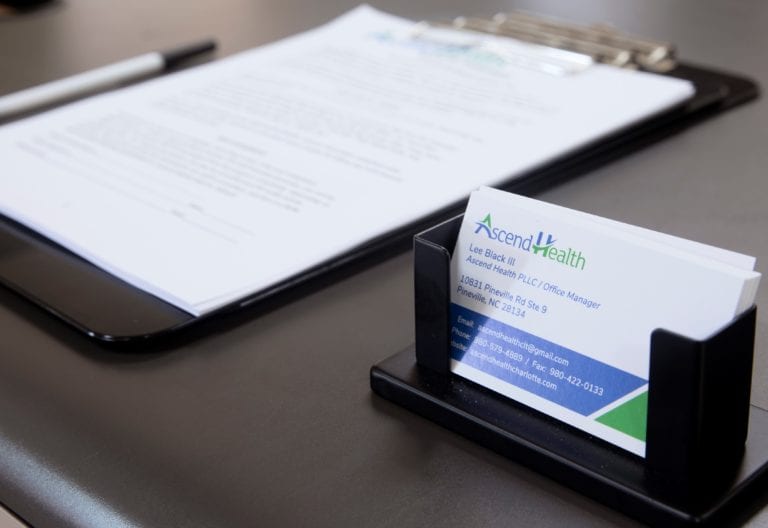Understanding Suboxone Treatment
Introduction to Suboxone
Suboxone is a medication approved by the U.S. Food and Drug Administration in 2002 for the treatment of opioid dependence (NIH). It is the first medication of its kind that can be prescribed in a doctor’s office by specially trained and licensed physicians. Suboxone is composed of two primary ingredients: buprenorphine and naloxone.
- Buprenorphine: A partial opioid agonist, it helps to reduce cravings and withdrawals.
- Naloxone: An opioid antagonist, it blocks the effects of opioid drugs, deterring misuse.
This combination provides a comprehensive treatment strategy to mitigate dependency, thus making Suboxone a cornerstone in addiction treatment with suboxone.
Benefits of Suboxone Treatment
Suboxone has proven to be highly effective in treating opioid addiction and supporting long-term recovery. The primary benefits include:
- Reduction in Cravings: Buprenorphine helps to diminish the intense cravings that often accompany opioid dependence.
- Decreased Withdrawal Symptoms: Suboxone mitigates withdrawal symptoms, making it easier for individuals to transition away from opioid use.
- Blocking Opioid Effects: Naloxone blocks the euphoric effects of opioids, reducing the likelihood of misuse.
Numerical Data
To illustrate the efficacy of Suboxone, consider the following results from a study by the NIH:
| Treatment Group | Weeks 4 & 8 (Opioid-Positive Urine Samples) | Week 12 (Opioid-Positive Urine Samples) |
|---|---|---|
| Extended Suboxone Treatment | Significantly lower | Not significantly different |
| Standard Detoxification | Higher | Not significantly different |
(NIH)
Participants on extended Suboxone treatment demonstrated much lower rates of opioid positivity at weeks 4 and 8 compared to the standard detoxification group. However, by week 12, the rates were similar as the dosage tapered off.
Moreover, extended Suboxone treatment effectively controlled withdrawal symptoms and supported overall well-being during the critical phases of recovery.
Choosing Ascend Health for your suboxone treatment guarantees a professional and supportive environment for managing opioid addiction. Our commitment is to provide evidence-based treatments, including Suboxone, to help individuals achieve sustainable recovery and maintain long-term sobriety. For more about the benefits of Suboxone treatment, visit our comprehensive guide.
Suboxone Considerations
When considering suboxone treatment for opioid addiction, it is important to understand its efficacy, safety, and controlled substance classification. At Ascend Health, we prioritize the well-being of our patients by providing evidence-based treatment options tailored to individual needs.
Efficacy and Safety
Suboxone, a combination of buprenorphine and naloxone, is a highly effective medication for treating opioid dependence. According to Medical News Today, Suboxone is effective in reducing opioid misuse and helping patients maintain their treatment regimen over a 24-week period. This combination medication works in two ways:
- Buprenorphine: This component reduces withdrawal symptoms and cravings, making it easier for individuals to abstain from opioids.
- Naloxone: Added to deter misuse, naloxone blocks the effects of opioids if Suboxone is injected, providing an extra layer of protection against relapse.
The combination of these two components supports long-term sobriety and overall well-being during recovery. For more details on how Suboxone supports recovery, visit our page on medication-assisted treatment.
| Aspect | Description |
|---|---|
| Treatment Duration | 24 weeks |
| Main Components | Buprenorphine and Naloxone |
| Primary Benefits | Reduces withdrawal symptoms and cravings, Blocks effects of opioids |
Controlled Substance Classification
Suboxone is classified as a Schedule III prescription drug under the Controlled Substances Act. This classification recognizes that while Suboxone has medical benefits, it also has the potential for misuse and dependency. As a Schedule III controlled substance, specific rules govern its prescription and dispensing. These rules ensure that Suboxone is used safely and effectively to treat opioid addiction while minimizing the risk of abuse.
At Ascend Health, we adhere to these regulations strictly, ensuring that our prescription and medication management protocols are both safe and compliant. For additional insights on the benefits of Suboxone treatment, please refer to our article on the benefits of suboxone treatment.
By understanding both the efficacy and classification of Suboxone, individuals seeking treatment can make informed decisions about their opioid addiction treatment options and embark on the path to long-term recovery.
Side Effects and Risks
When considering suboxone treatment for opioid addiction, it is important to be aware of the potential side effects and risks associated with its use. At Ascend Health, we prioritize your well-being and aim to provide comprehensive information to help you make informed decisions about your treatment.
Common Side Effects
Suboxone can cause a range of side effects, from mild to severe. It’s critical to be aware of these so that we can monitor your treatment and address any issues promptly. Common side effects include:
| Side Effect | Description |
|---|---|
| Constipation | Difficulty in bowel movements |
| Headache | Pain or discomfort in the head |
| Weight Changes | Unexplained gain or loss of weight |
| Rash | Skin irritation or allergic reactions |
| Sweating | Increased perspiration |
| Hair Loss | Thinning or shedding of hair |
| Insomnia | Difficulty in falling or staying asleep |
| Liver Damage | Impairment of liver function |
Potential Risks of Suboxone Use
While Suboxone is effective in treating opioid addiction, it also carries some risks that need to be managed carefully. These include:
- Severe Allergic Reactions: Symptoms such as difficulty breathing, swelling of the face, lips, or throat should be addressed immediately.
- Misuse and Dependence: Suboxone has the potential for misuse and can lead to dependency. Proper medication management is essential.
- Breathing Problems: Respiratory issues, especially when combined with other depressants.
- Coma: In extreme cases, improper use can lead to coma.
- Hormonal Issues: Disruption in hormone levels, potentially leading to various health issues.
- Severe Withdrawal Symptoms: Abrupt cessation can cause severe withdrawal; a gradual tapering is recommended.
| Potential Risk | Description |
|---|---|
| Severe Allergic Reactions | Difficulty in breathing, swelling |
| Misuse and Dependence | Potential for addiction and misuse |
| Breathing Problems | Respiratory depression risks |
| Coma | Risk in extreme cases |
| Hormonal Issues | Disruptions in hormone levels |
| Withdrawal Symptoms | Severe symptoms if use is stopped abruptly |
By understanding these side effects and risks, you can be better prepared to manage your suboxone treatment for opioid addiction. Our team at Ascend Health is committed to supporting you throughout your journey to recovery, providing the care and guidance you need for long-term sobriety. For more information on the benefits of suboxone treatment, and to debunk common myths, explore our comprehensive resources.
Role of Suboxone in Addiction Recovery
Suboxone plays a crucial role in the journey towards recovery from opioid addiction. At Ascend Health, our goal is to provide comprehensive and personalized treatment plans using Suboxone to assist in achieving and maintaining long-term sobriety.
Medication-Assisted Treatment
Medication-Assisted Treatment (MAT) programs that include Suboxone have proven to be highly effective for opioid addiction treatment. Suboxone combines buprenorphine and naloxone, which work together to reduce opioid cravings and alleviate withdrawal symptoms. This not only makes the recovery process more manageable for patients but also blocks the euphoric effects of opioids if misused.
| Treatment Aspect | Benefits |
|---|---|
| Cravings Reduction | Suboxone reduces the intense cravings associated with opioid addiction. |
| Withdrawal Symptom Relief | It alleviates severe withdrawal symptoms, aiding in the detox process. |
| Blocking Opioid Effects | Prevents the euphoric effects of opioids, reducing the risk of relapse. |
With MAT, our patients receive ongoing medication management to adjust dosage levels as needed, ensuring a balanced and effective treatment approach. This type of structured support is integral to addressing the complexities of addiction and providing a stable platform for recovery.
Support for Long-Term Sobriety
Maintaining long-term sobriety is one of the primary goals of our Suboxone treatment for opioid addiction. Suboxone aids in stabilizing patients by supporting them during the most challenging stages of their recovery journey. According to the NIH, buprenorphine, the main component of Suboxone, has been successfully utilized in the treatment of heroin addiction, acting on the brain’s opiate receptors to relieve withdrawal and cravings without causing intense highs or dangerous side effects (NIH).
Recovery with Suboxone involves more than just medication. Our approach integrates behavioral therapy and continuous support to address the psychological aspects of addiction. By reducing cravings and withdrawal symptoms, Suboxone allows patients to focus on their therapy and personal growth, ultimately supporting a stable and lasting recovery.
| Stage of Recovery | Role of Suboxone |
|---|---|
| Detox Phase | Eases withdrawal symptoms and reduces cravings. |
| Maintenance Phase | Sustains recovery by stabilizing the patient’s condition. |
| Tapering Phase | Suboxone is slowly tapered off to prevent withdrawal as treatment concludes. |
For more details on how Suboxone supports long-term sobriety, explore our suboxone treatment with Ascend Health.
Through a comprehensive MAT program, we provide personalized and effective addiction treatment with Suboxone. By addressing both the physical and psychological components of addiction, our approach ensures a thorough and supportive path to recovery. Discover more about the benefits of Suboxone treatment and how our dedicated team at Ascend Health can help you or your loved one on the road to recovery.
Access and Regulations
Understanding the regulatory landscape and access requirements is crucial for effective suboxone treatment for opioid addiction.
Prescription Requirements
To ensure controlled and safe distribution, suboxone treatment for opioid addiction is regulated under specific legislative frameworks. Initially, the Drug Addiction Treatment Act of 2000 (DATA 2000) allowed qualified physicians to prescribe Schedule III, IV, or V opioids, including buprenorphine, for opioid use disorder (OUD). This act played a significant role in ensuring that patients received appropriate and professional medication management.
Qualified prescribers are required to obtain a waiver under Title 42 CFR to prescribe buprenorphine. These prescribers are referred to as “DATA-waivered” providers and must adhere to specific regulatory requirements to safeguard against the misuse of medications like buprenorphine. The criteria for obtaining this waiver include specialized training and adherence to stringent regulatory protocols.
Legislative changes, such as the Mainstreaming Addiction Treatment (MAT) Act, have further streamlined the process. The MAT Act introduced significant shifts in making OUD treatment more accessible within healthcare settings by reducing barriers to prescribing medications like buprenorphine. This change ensures that more healthcare providers can prescribe suboxone without unnecessary regulatory hurdles, improving overall access to treatment.
Changing Healthcare Landscape
The healthcare landscape is constantly evolving to meet the needs of patients with opioid addiction. Recent legislative changes have significantly impacted how medication-assisted treatment is provided. For example, the elimination of the DATA-waiver requirement post-July 2023 has expanded the scope of providers who can offer buprenorphine for OUD. This change means that providers no longer need additional certification, substantially increasing the number of healthcare professionals available to treat opioid addiction.
Additionally, the expansion of healthcare provider training through legislation like the MATE Act aims to improve access to evidence-based treatment. This ensures that patients can receive necessary care without facing regulatory challenges. Ascend Health is committed to staying updated with these changes to provide the best suboxone treatment with Ascend Health options for our patients.
To present this evolving landscape effectively, here is a summary table of key legislative changes:
| Legislative Act | Key Changes |
|---|---|
| DATA 2000 | Allowed qualified physicians to prescribe buprenorphine for OUD |
| Title 42 CFR | Outlined regulatory requirements for DATA-waivered prescribers |
| MAT Act | Reduced barriers to prescribe buprenorphine, increasing provider access |
| Post-July 2023 Regulations | Eliminated DATA-waiver requirement, expanding treatment scope |
Navigating these regulations is essential for providing effective addiction treatment with suboxone. Our team at Ascend Health is dedicated to ensuring patients receive the highest standard of care through a comprehensive understanding of these regulatory frameworks.
Debunking Suboxone Myths
When it comes to suboxone treatment for opioid addiction, there are numerous misconceptions and stigmas that can deter individuals from seeking essential care. At Ascend Health, we aim to address these myths and provide a clearer understanding of Suboxone’s role in recovery.
Recovery Misconceptions
A prevalent misconception about Suboxone is the belief that individuals aren’t truly in recovery if they use Suboxone. This idea suggests that taking medication means one is not committed to becoming drug-free. However, it’s important to understand that Suboxone is a medication designed to manage a chronic condition, much like insulin for type 1 diabetes. The notion that someone isn’t in recovery while on Suboxone is not only false but also harmful as it discourages people from seeking the treatment they need (Harvard Health Publishing).
Addressing Stigma
Stigmatization surrounding Suboxone use can hinder effective opioid addiction treatment. Some believe that using Suboxone merely replaces one addiction with another. This is untrue. Suboxone works by partially activating opioid receptors, which reduces cravings and withdrawal symptoms without producing the ‘high’ associated with opioid abuse.
There is also a myth that Suboxone users are not genuinely sober. In reality, Suboxone is part of medication-assisted treatment, which has been proven to support long-term sobriety and reduce the risk of relapse. By promoting stability in the user’s life, Suboxone enables individuals to focus on rebuilding their lives and engaging in therapy and support groups.
Educating the community about the benefits and effectiveness of Suboxone aids in reducing stigma and fostering a more supportive environment for those seeking recovery. At Ascend Health, we believe in the value of comprehensive care, which includes medical, psychological, and social support. To learn more about the advantages of Suboxone treatment, visit our page on the benefits of suboxone treatment.
For those interested in how we can assist with medication management or other associated services, visit our section on medication management.
By dispelling myths and addressing stigma, we aim to make suboxone treatment more accessible and accepted, ensuring that more individuals can embark on their journey to recovery with confidence and support.



